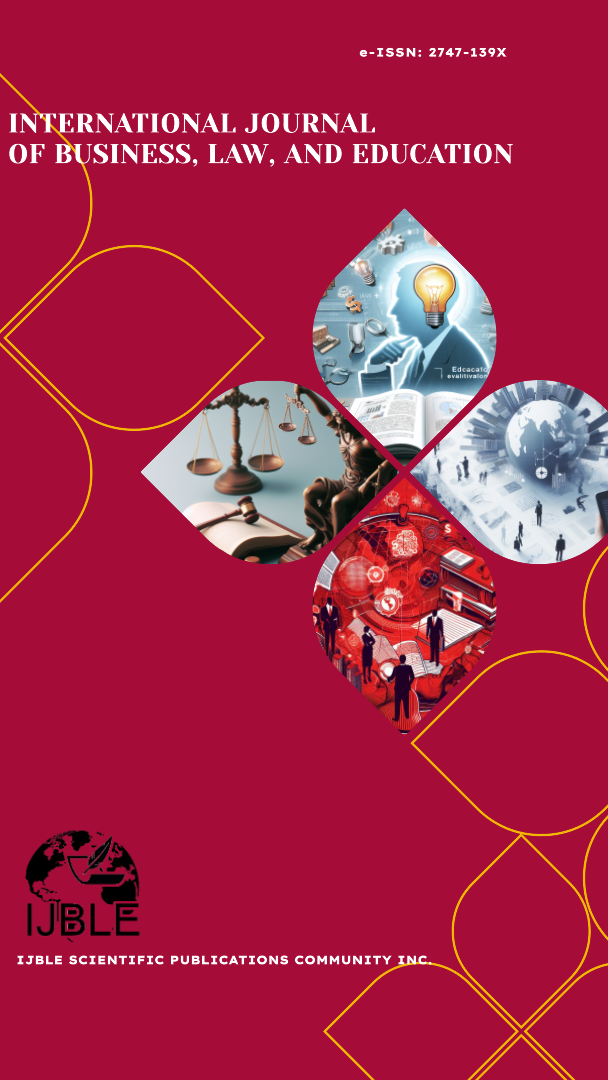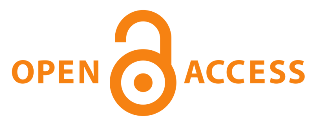The Success of Women Entrepreneur: Influence of Entrepreneurship Education, Access to Capital, Technology Adoption, Family Support, and Business Network
DOI:
https://doi.org/10.56442/ijble.v6i2.1188Keywords:
Women's MSMEs, Entrepreneurship Education, Capital Access, Technology Adoption, Family Support, Business NetworkAbstract
This study aims to identify and analyze the influence of entrepreneurship education, access to capital, technology adoption, family support, and business networks on the success of MSMEs managed by women in urban areas of Indonesia. A quantitative approach was used with a descriptive and causal design. The sample consisted of 150–200 female entrepreneurs in the Jabodetabek, Bandung, and Surabaya areas, obtained through purposive sampling techniques. Data were collected using questionnaires and analyzed using multiple linear regression. The results of the study are expected to provide theoretical and practical implications in supporting women's empowerment in the MSME sector.
References
Apriliani, M. F., & Widiyanto, W. (2018). Pengaruh Karakteristik Wirausaha, Modal Usaha Dan Tenaga Kerja Terhadap Keberhasilan Umkm Batik. Economic Education Analysis Journal, 7(2), 761–776.
Beck, T., Demirgüç-Kunt, A., & Maksimovic, V. (2008). Financing patterns around the world: Are small firms different? Journal of Financial Economics, 89(3), 467–487.
Bourdieu, P. (2011). The forms of capital.(1986). Cultural Theory: An Anthology, 1(81–93), 949.
Brush, C. G., Greene, P. G., & Hart, M. M. (2001). From initial idea to unique advantage: The entrepreneurial challenge of constructing a resource base. Academy of Management Perspectives, 15(1), 64–78.
Chrisman, J. J., Chua, J. H., & Steier, L. P. (2003). An introduction to theories of family business. In Journal of business venturing (Vol. 18, Issue 4, pp. 441–448). Citeseer.
Clemente-Suárez, V. J., Beltrán-Velasco, A. I., Herrero-Roldán, S., Rodriguez-Besteiro, S., Martínez-Guardado, I., Martín-Rodríguez, A., & Tornero-Aguilera, J. F. (2024). Digital Device Usage and Childhood Cognitive Development: Exploring Effects on Cognitive Abilities. Children, 11(11), 1299.
Coleman, S., & Robb, A. (2016). Financing high growth women-owned enterprises: Evidence from the United States. In Women’s entrepreneurship in global and local contexts (pp. 183–202). Edward Elgar Publishing.
Coleman, S., & Robb, A. (2019). The rising tide angel training program: Education for the ecosystem (not just for the entrepreneur!). In The role and impact of entrepreneurship education (pp. 255–274). Edward Elgar Publishing.
Creswell, J. W., & Poth, C. N. (2016). Qualitative inquiry and research design: Choosing among five approaches. Sage publications.
Drucker, P., & Maciariello, J. (2014). Innovation and entrepreneurship. Routledge.
Elam, A. B. (2008). Gender and entrepreneurship. Edward Elgar Publishing.
Elshifa, A., Perdana, M. A. C., Matiala, T. F., Yasin, F., & Mokodenseho, S. (2023). Analisis Pengaruh Pendidikan, Pelatihan, dan Dukungan Kelembagaan terhadap Keberhasilan Usaha Mikro. Sanskara Ekonomi Dan Kewirausahaan, 1(03), 123–134.
Fayolle, A., & Gailly, B. (2015). The impact of entrepreneurship education on entrepreneurial attitudes and intention: Hysteresis and persistence. Journal of Small Business Management, 53(1), 75–93.
Gabrielsson, J., Landström, H., Politis, D., & Sørheim, R. (2023). Historical evolution of entrepreneurial education as a scholarly field. The Age of Entrepreneurship Education Research: Evolution and Future, 23, 9–32.
Ghozali, I. (2018). Aplikasi Analisis Multivariative Dengan Program IBM SPSS 25 Edisi 9. Badan Penerbit Universitas Diponegoro.
Gibb, A. A. (1993). Enterprise culture and education: Understanding enterprise education and its links with small business, entrepreneurship and wider educational goals. International Small Business Journal, 11(3), 11–34.
Granovetter, M. (2018). The impact of social structure on economic outcomes. In The sociology of economic life (pp. 46–61). Routledge.
Greenhaus, J. H., & Allen, T. D. (2011). Work–family balance: A review and extension of the literature.
Greenhaus, J. H., Callanan, G. A., & Godshalk, V. M. (2018). Career management for life. Routledge.
Hair, J. F., Risher, J. J., Sarstedt, M., & Ringle, C. M. (2019). When to use and how to report the results of PLS-SEM. European Business Review, 31(1), 2–24. https://doi.org/https://doi.org/10.1108/EBR-11-2018-0203
Kirkwood, J. (2009). Motivational factors in a push‐pull theory of entrepreneurship. Gender in Management: An International Journal, 24(5), 346–364.
Kusufa, F., Tanuwijaya, S., & Kahi, D. B. (2024). EKSPLORASI MODEL KEUANGAN YANG INKLUSIF UNTUK MENINGKATKAN PARTISIPASI PEREMPUAN DALAM BISNIS DAN KEWIRAUSAHAAN: Keuangan Inklusif, Kewirausahaan, Perempuan, Bisnis, UKM. Jurnal Paradigma Ekonomika, 19(4), 911–920.
Moya-Clemente, I., Ribes-Giner, G., & Chaves-Vargas, J. C. (2021). Sustainable entrepreneurship: An approach from bibliometric analysis. Journal of Business Economics and Management, 22(2), 297–319.
Neck, H. M., & Greene, P. G. (2011). Entrepreneurship education: known worlds and new frontiers. Journal of Small Business Management, 49(1), 55–70.
Polli, A. (2014). A walk in the woods: Investigating ethical design, ubiquitous computing and social media. Leonardo, 47(5), 504–505.
Rizal, M., Setianingsih, D., & Chandra, R. (2016). Faktor-faktor yang mempengaruhi wanita berwirausaha (Studi kasus di Kota Langsa). Jurnal Manajemen Dan Keuangan, 5(2), 525–534.
Rogers, E. M., Medina, U. E., Rivera, M. A., & Wiley, C. J. (2005). Complex adaptive systems and the diffusion of innovations. The Innovation Journal: The Public Sector Innovation Journal, 10(3), 1–26.
Sekaran, U., & Bougie, R. (2016). Research methods for business: A skill building approach. john wiley & sons.
Wheeler, A. A., Boettinger, W. J., & McFadden, G. B. (1992). Phase-field model for isothermal phase transitions in binary alloys. Physical Review A, 45(10), 7424.
Widiyanti, R., & Basuki, B. (2023). Pengaruh Faktor Budaya Dan Peranan Gender Pada Wirausaha Perempuan Di UMKM. Al-KALAM: JURNAL KOMUNIKASI, BISNIS DAN MANAJEMEN, 10(2), 275–289.
Downloads
Published
How to Cite
Issue
Section
License

This work is licensed under a Creative Commons Attribution-NonCommercial-ShareAlike 4.0 International License.







